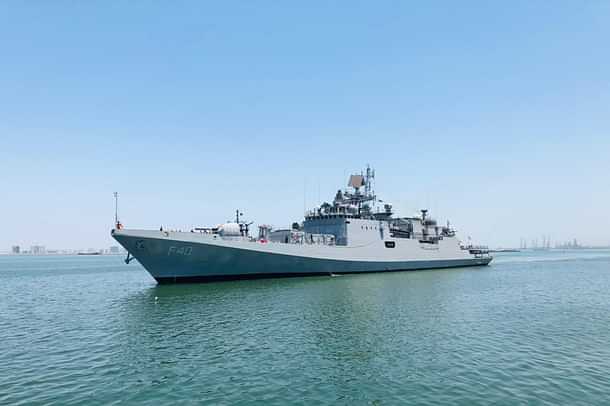SOURCE: IDRW.ORG


In a significant milestone for the Indian Navy, Tamal, the last warship India will import from abroad, is on track for commissioning in June 2025. This stealth frigate, currently under construction in Russia, marks the end of an era as India shifts toward complete self-reliance in warship design and production. As the commissioning date approaches, an Indian naval crew has already arrived in Russia to participate in a series of critical trials, ensuring the vessel is ready to join the fleet.
Tamal is the second of two stealth frigates being built in Russia under a $2.5 billion inter-governmental agreement signed with India in October 2016. The deal, part of Project 11356, includes four frigates: two constructed at the Yantar Shipyard in Kaliningrad, Russia (INS Tushil and Tamal), and two to be built domestically at Goa Shipyard Limited (GSL) with Russian technical assistance. The first Russian-built frigate, INS Tushil, was commissioned on December 9, 2024, in Kaliningrad, attended by Indian Defence Minister Rajnath Singh. Now, Tamal is poised to follow, closing the chapter on imported warships for the Indian Navy.
In preparation for the June commissioning, a crew of approximately 200 Indian Navy personnel arrived in St. Petersburg last week. Their journey began with training in St. Petersburg, after which they will move to Kaliningrad to oversee the final stages of Tamal’s preparation. The warship has already completed its manufacturer trials and is currently undergoing State Committee Trials, a rigorous evaluation process conducted by Russian authorities. Following this, the Indian crew will join delivery acceptance trials—both in harbor and at sea—spanning 45 to 50 days. These trials will include weapons testing, ensuring the frigate meets operational standards before its formal handover.
The crew’s involvement is a hands-on affair, blending training with real-world experience. They will work alongside Russian specialists to familiarize themselves with Tamal’s systems, from its stealth technology to its advanced weaponry. This collaboration ensures a seamless transition as the ship sails to its home port in India, expected sometime after June.
Tamal is an upgraded Krivak III-class frigate, designed for blue-water operations across multiple dimensions of naval warfare—air, surface, underwater, and electromagnetic. Measuring 125 meters in length and displacing 3,900 tonnes, it integrates cutting-edge Russian and Indian technologies. The ship features a reduced radar cross-section, making it harder to detect, and is equipped with a lethal array of weapons, including eight vertically launched BrahMos supersonic anti-ship cruise missiles, Shtil-1 surface-to-air missiles, a 100 mm gun, close-in weapon systems, torpedoes, and anti-submarine rockets. Its propulsion comes from Ukrainian Zorya-Mashproekt gas turbines, a notable feat given the ongoing Russia-Ukraine conflict.
With a speed exceeding 30 knots, Tamal will enhance the Indian Navy’s operational reach in the Indian Ocean Region (IOR), a critical theater amid rising maritime challenges from China and Pakistan. Once commissioned, it will join the Western Fleet, based at Karwar Naval Base, complementing INS Tushil in bolstering India’s maritime defense.
The construction of Tamal has not been without hurdles. Delays caused by the COVID-19 pandemic, the Russia-Ukraine war, and Western sanctions disrupted timelines, pushing the original delivery date from 2022 to 2025. Despite these challenges, the project showcases remarkable collaboration. Ukrainian engines power the frigate, delivered to Russia amid wartime tensions, while Indian and Russian engineers have worked together to integrate 26% indigenous content, including systems from companies like BrahMos Aerospace and Bharat Electronics.
This partnership extends beyond hardware. Russian specialists are training the Indian crew, transferring knowledge that will support not only Tamal’s operations but also the construction of the two frigates underway at GSL, expected to be completed by mid-2026.
NOTE : Article cannot be reproduced without written permission of idrw.org in any form even for YouTube Videos to avoid Copy right strikes. Websites doing illegal reproductions will get DMCA and Legal Notices.